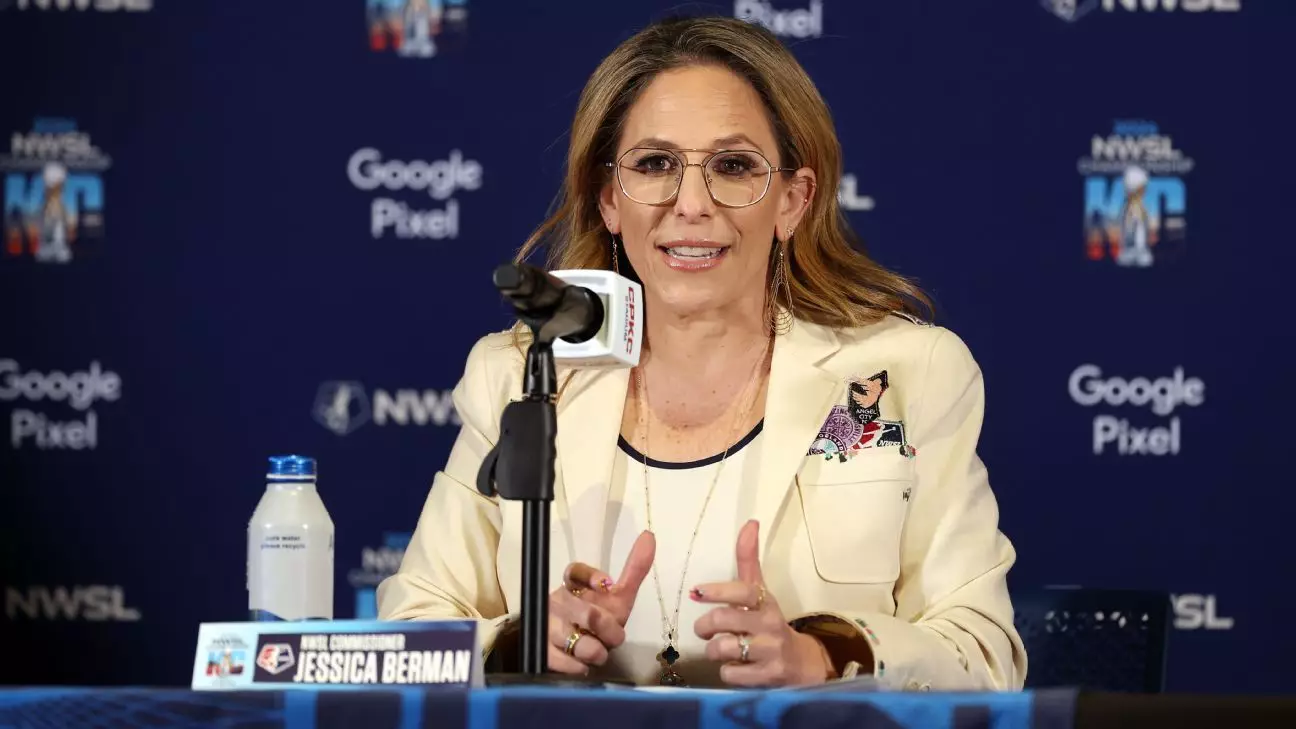The National Women’s Soccer League (NWSL) is on the precipice of a significant expansion, marking a pivotal moment in its history and in the trajectory of women’s sports as a whole. As the league eagerly anticipates the unveiling of its newest franchise, rumored to be based in Denver, NWSL Commissioner Jessica Berman conveyed a sense of urgency and ambition about the future of the league. Delving into the implications of expansion, the strategic considerations behind market selection, and the upcoming changes to player recruitment, this analysis explores the multifaceted developments currently shaping the NWSL’s landscape.
The announcement about the addition of a 16th franchise is more than just a formality; it symbolizes the league’s commitment to growth. Confirmed by ESPN sources, the Denver franchise will expand the league’s footprint, potentially tapping into a market rich with soccer enthusiasm. The excitement surrounding this announcement is palpable, reflecting both the league’s ambition and the persistent interest among potential owners. As Commissioner Berman mentioned, this expansion phase is merely one chapter in an ongoing strategy focused on attracting more teams and, consequently, more fans.
The decision to award the franchise to Denver is not an isolated incident; rather, it exemplifies a pattern of strategic growth aimed at maximizing the league’s reach and popularity. Denver, with its burgeoning support for soccer and a community eager for more women’s sports, presents a fitting choice. The league’s growth will unfold as a series of deliberate steps, and upcoming announcements about other franchises are likely to follow in the coming months.
One of the most compelling aspects of Berman’s announcement lies in the detailed criteria she provided for selecting future markets post-2026. By articulating the importance of ownership, infrastructure, and market viability in the decision-making process, the league demonstrates a thoughtful approach to expansion that transcends the mere desire to increase the number of teams.
Ownership is critical; successful franchises require not only financial resources but also a strong vision for the future. The ability of owners to cultivate basketball cultures and build robust support systems is paramount. Next, the league emphasizes the significance of infrastructure; new teams must have access to top-notch facilities that can support their operations today and in the future. This focus enhances the league’s reputation and ensures teams can deliver a professional experience for players and fans alike. Finally, while recognizing the vast potential for growth across the United States, Berman’s placement of market viability third on the list reveals a sophisticated understanding of the landscape. It suggests that success can be fostered in less predictable markets.
As the NWSL prepares for its 2025 season, it faces the challenge of navigating player recruitment in the absence of a traditional college draft. Berman acknowledges the learning curve that players and technical staff alike will experience as the league transitions into a new era characterized by free agency. This shift marks a significant change in how teams will construct their rosters moving forward.
The absence of a college draft brings both opportunities and uncertainties. On the one hand, free agency allows for greater player mobility and autonomy, enabling athletes to seek opportunities that align with their professional goals. On the other hand, the immediate impact of this change has reportedly left many players in limbo, raising concerns about job placement in a competitive market. It is crucial that the league establishes supportive measures to assist players in navigating this new landscape, thereby ensuring that talent does not go untapped or undervalued.
With the completion of the 2025 season schedule, featuring special events designed to heighten engagement, the NWSL is taking active steps to solidify its brand and increase fan interaction. Initiatives such as Rivalry Weekend and Decision Day aim to enhance the spectator experience, making every match significant. These strategies highlight the league’s recognition of the entertainment aspect of sports, as fan engagement becomes more critical than ever.
The NWSL stands at a crucial juncture, balancing expansion with effective resource management. As they prepare to welcome new franchises and navigate unprecedented changes in player recruitment, the league reflects a commitment to growth fueled by strategic foresight. Under Berman’s leadership, the NWSL’s future appears bright, with innovative strategies set to propel the league into its next chapter of development.

